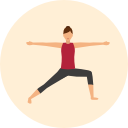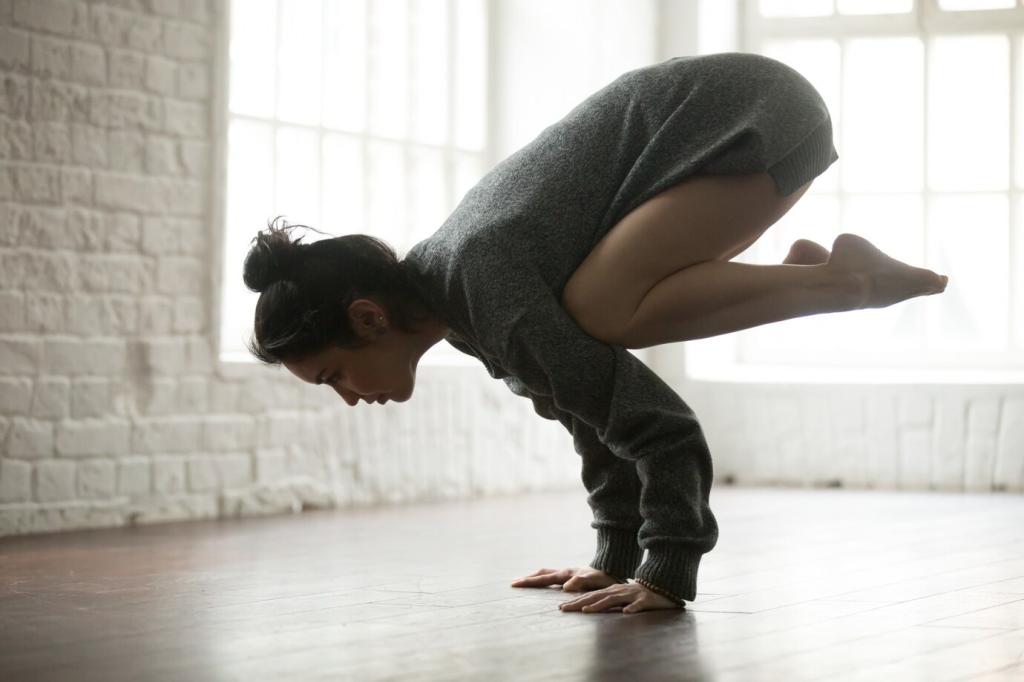
Yoga for Beginners: Flexibility Guide — Start Where You Are
Chosen theme: ‘Yoga for Beginners: Flexibility Guide’. Welcome to a gentle, practical path toward easier movement, calmer breath, and steady progress. Subscribe for weekly sequences, share questions, and grow flexible with a kind, beginner-first approach.
Understanding Flexibility: What It Is and Isn’t
Mobility vs. Flexibility
Mobility is control through range; flexibility is passive length. For beginners, train both with mindful movement and supported holds, so newfound length actually shows up in daily life, not just on the mat.
Nervous System and Stretch Tolerance
Your muscles aren’t steel cables; your nervous system sets the limits. Slow breathing, steady holds, and gradual exposure teach your body that longer ranges are safe, unlocking flexibility without forcing or painful pushing.
Consistency Over Intensity
Five gentle sessions each week beat one heroic stretch marathon. Beginners gain faster by repeating small, sustainable practices that the body remembers, honors, and adapts to. Show up regularly, notice shifts, and celebrate steady improvement.
Warm-Up Rituals for Safe Stretching
Begin with three minutes of nasal breathing, expanding ribs and back body. Pair inhales with gentle reaches, exhales with soft releases. This primes the diaphragm and signals safety, easing you toward kinder, deeper ranges.
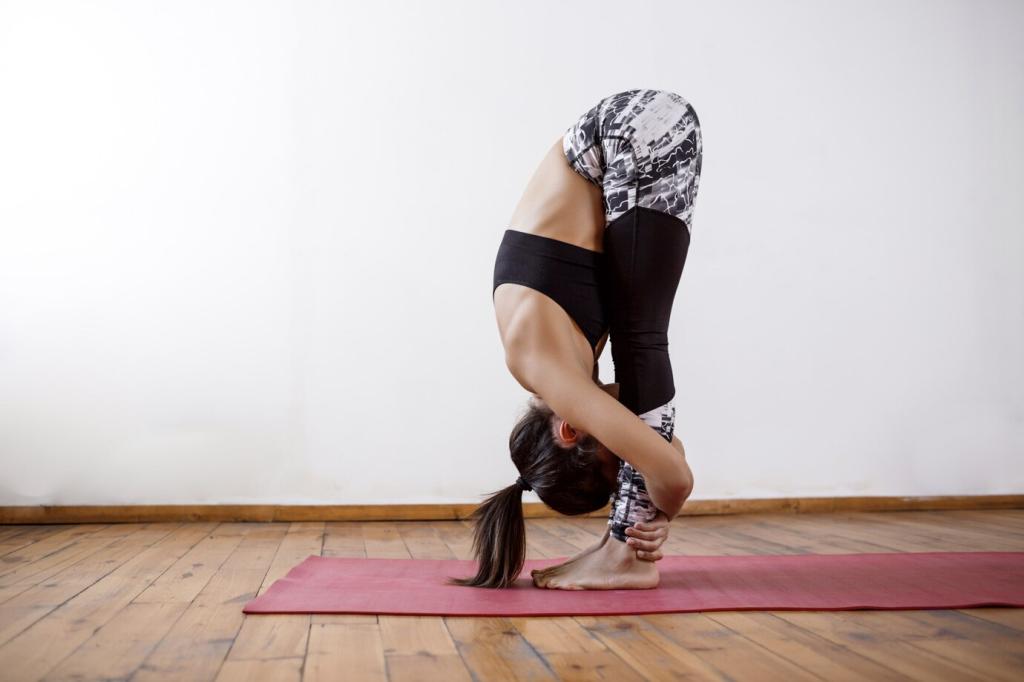
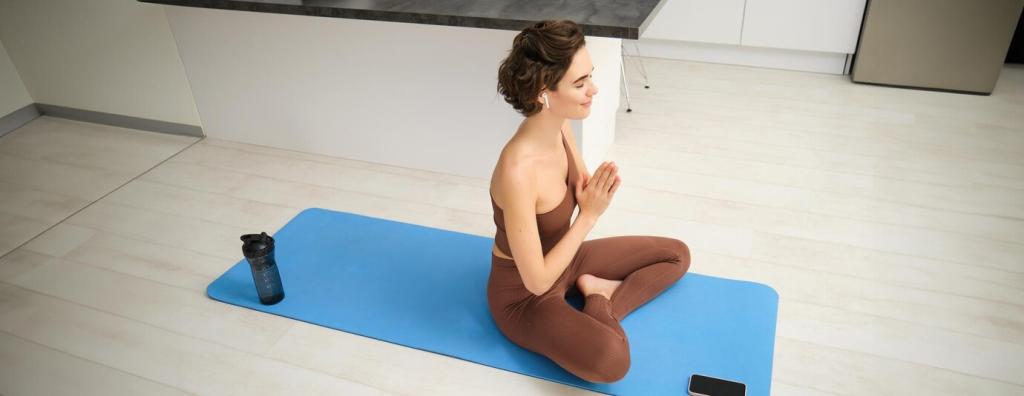
Warm-Up Rituals for Safe Stretching
Circle wrists, shoulders, hips, and ankles slowly, like oiling hinges you’ve ignored. Ten smooth circles each direction awaken connective tissue, increase synovial fluid flow, and build confidence before any longer, beginner-friendly stretches.
Hamstrings: Supported Forward Fold
Sit on a folded blanket and loop a strap around your feet. Soften knees, hinge from hips, and breathe into your back. You’ll feel length without tugging behind the knees or rounding the spine.
Hips: Low Lunge Variations
Pad the back knee, tuck toes for stability, and stack front knee over ankle. Lift chest, engage glutes gently, and pulse. Add blocks under hands. Over weeks, space opens across hip flexors and quads.
Spine and Shoulders: Cat–Cow to Puppy Pose
Coordinate breath with spinal waves, then walk hands forward into Puppy Pose. Keep hips above knees, melt chest. This pairs dynamic mobility with a supported stretch that teaches patience and shoulder awareness.
Desk Breaks that Decompress
Set a timer every fifty minutes. Stand, interlace fingers, reach up, then side bend both ways. Add a doorway chest opener. These tiny resets counter stiffness and make later yoga stretches more available.
Morning and Evening Bookends
Upon waking, do ankle pumps, hip rocks, and a gentle seated twist. Before bed, breathe box-style and hang in a supported forward fold. Bookending the day calms nerves and keeps tissue pliable.
Stacking Stretches with Existing Routines
Pair calf stretches with brushing teeth, or a quad release while the kettle boils. Habit stacking removes friction for beginners, turning ordinary moments into quiet invitations toward length, ease, and sustainable progress.
Common Mistakes and How to Avoid Them
Chasing the Deepest Shape
A dramatic Instagram angle isn’t a training plan. Practice the version you can breathe in for thirty seconds. Honor sensation at seven out of ten, and you’ll progress faster with fewer setbacks.
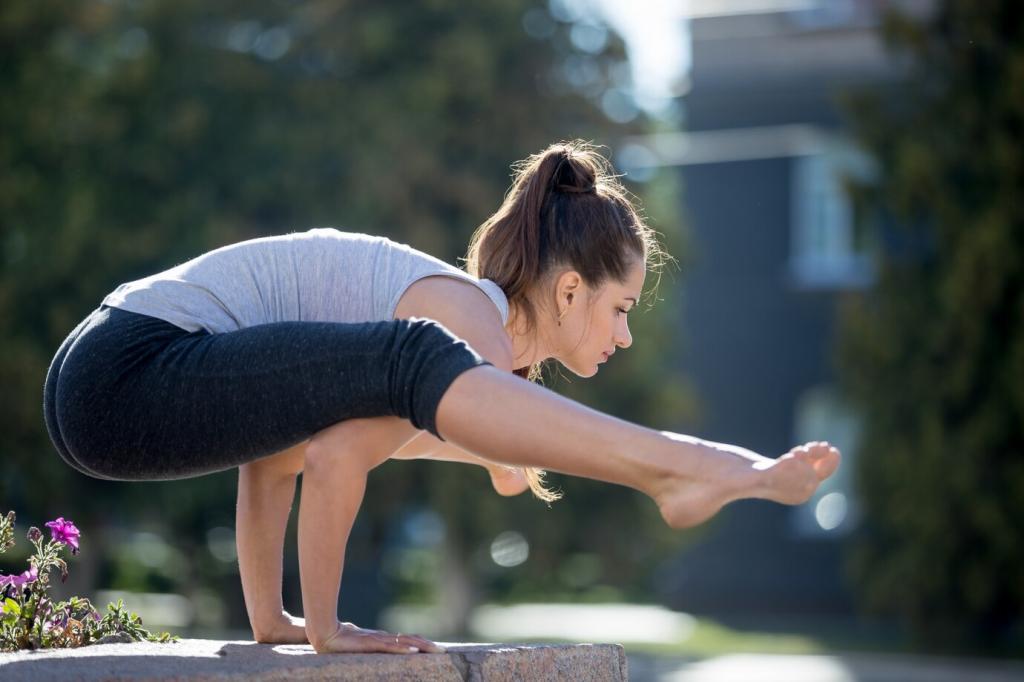
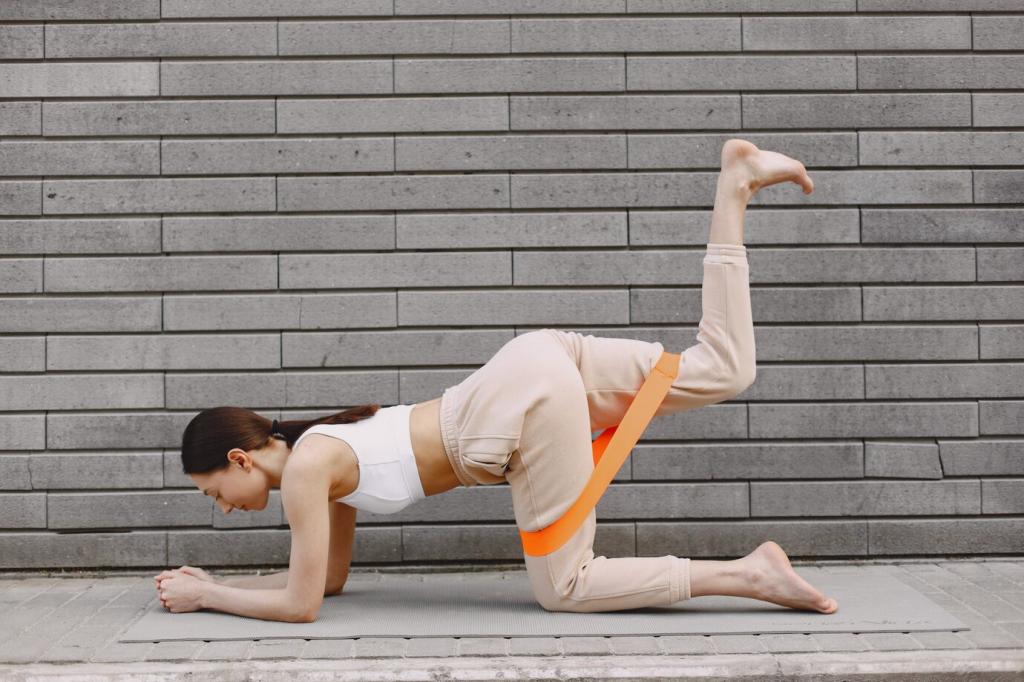
Holding the Breath
If breath is trapped, your body reads danger and tightens. Count four in, six out, and soften shoulders. Breath-first stretching is the beginner’s shortcut to safer length and calmer focus.
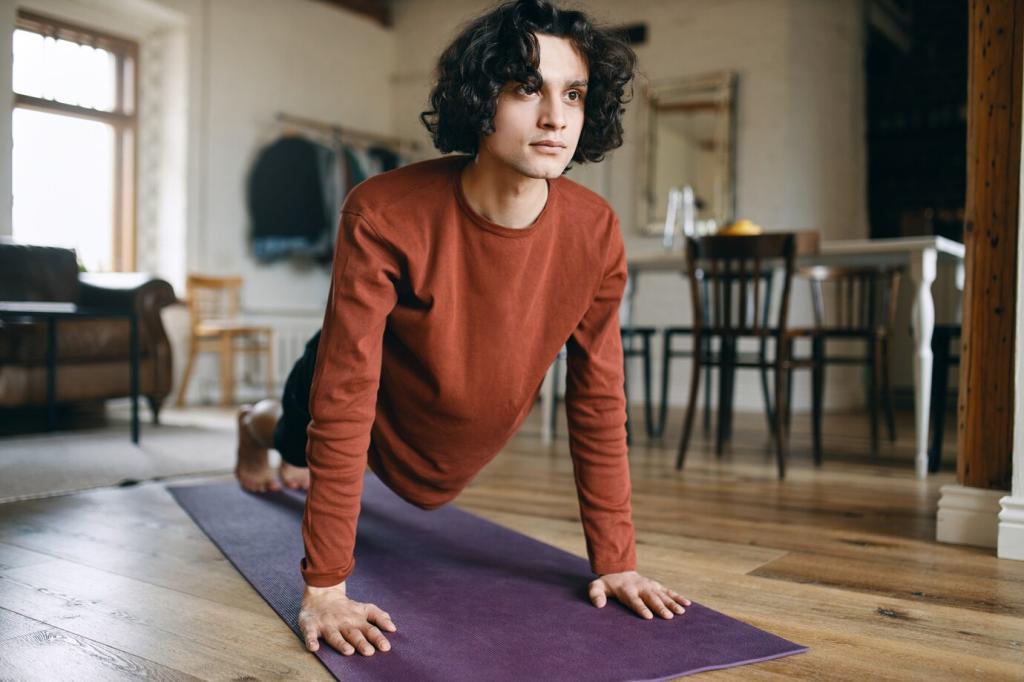
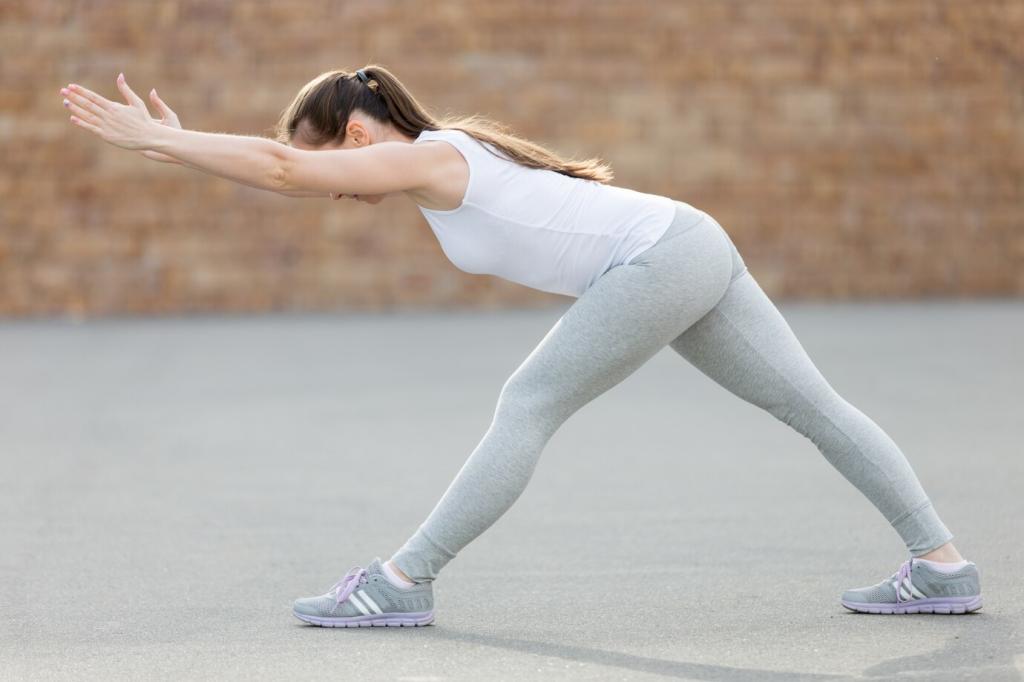
A 15-Minute Starter Sequence
Cat–Cow, shoulder rolls, and ankle circles with slow inhales and longer exhales. Keep movements small and smooth. The goal is awareness and warmth, not intensity or impressive shapes, especially on day one.
A 15-Minute Starter Sequence
Low Lunge, Half Split with soft knee, and Puppy Pose. Use blocks and a strap. Breathe evenly, dwelling where you feel steady sensation without pain, building trust in your body’s signals.
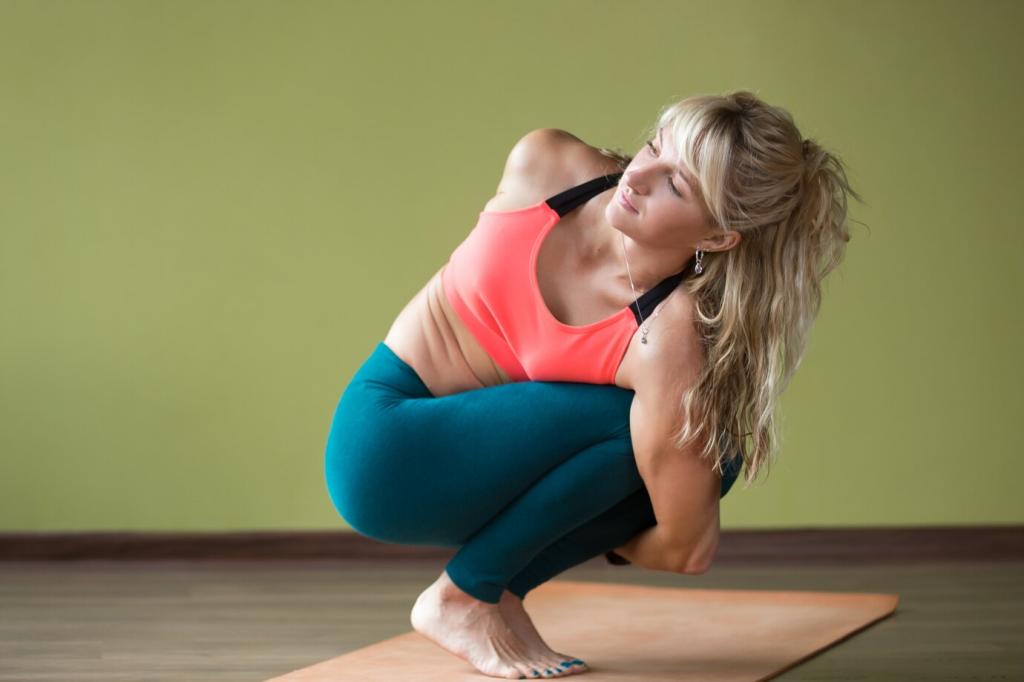
Simple Metrics that Matter
Note how many pillows you need in forward folds, or whether heels move closer in Down Dog. Range feels different daily; trends over weeks tell the real beginner story better than one dramatic snapshot.
Celebrate Small Wins
Maya, a reader, celebrated touching her shins after three weeks. That joy fueled consistency better than any rigid deadline. Share your tiny triumphs in the comments so others feel brave starting today.
Community and Accountability
Invite a friend to practice the starter sequence twice weekly. Post your favorite prop hack, subscribe for new routines, and ask questions. Beginners thrive when learning is social, encouraging, and gently challenging.
